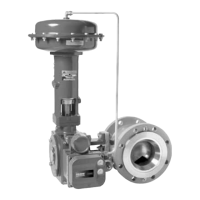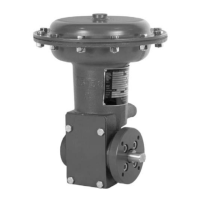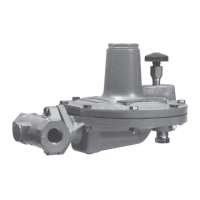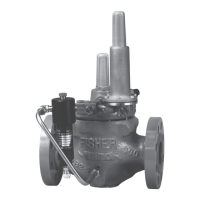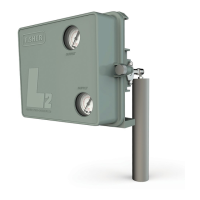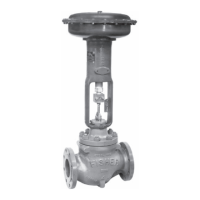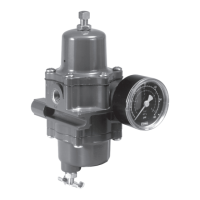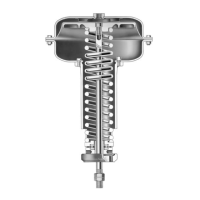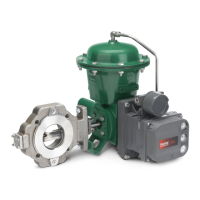Instruction Manual
D100331X012
1066 and 1066SR F & G Actuators
October 2012
7
8. Perform the Adjustment procedures before applying actuator loading pressure.
Loading Pressure Connection
The actuator should have either a loading solenoid, a switching valve, or a positioner connected to the 1/4 NPT
pressure connections l ocated at the top of th e actuator cylinder. Refer to figures 5 and 6.
1. Connect either 6.4 mm (1/4-inch) or 9.5 mm (3/8-inch) tubing between the actuator pressure connection and a
controlling instrument. Keep the length of tubing as short as possible to avoid transmission lag in the control signal.
For further information if using a positioner, please refer to the appropriate manual.
For 1066 actuators with a handwheel or wrench override, provide an actuator bypass valve and tubing between the
two loading pressure connections (not shown). Pressure trapped in the cylinder can make it difficult to change the
piston position if pressure connections are blocked because of an external device.
CAUTION
The actuator travel stop must be adjusted so the valve does not absorb the output of the actuator. Failure to limit the
actuator travel as described in this manual or in the valve manual can result in damage to the valve, shaft(s), or other valve
components.
2. Check the control valve assembly for correct action after it is completely installed and connected. For successful
operation, the piston rod (key 5) and valve shaft should move freely in response to loading pressure changes on the
piston (key 3).
Adjustment
Theactuatorisfactorysetforafull90degreesofvalveshaftrotationunlessotherwisespecifiedbythecustomer.
Control actuator/valve assemblies are factory set as specified by customer order. If the actuator is removed from the
valve or if valve travel appears to be incorrect, re-adjust as necessary.
CAUTION
Refer to the CAUTION provided in the Loading Pressure Connection section above. Over-travel of the valve can cause
damage to the valve components.
1. Isolatethecontrolvalvefromthelinepressure,releasepressure from both sides of the valve, and drain the process
media from both sides of the valve. Shut off all pressure lines to the actuator, and release the pressure. Use lock-out
procedures to be sure that the above measures stay in effect while you work on the equipment.
WARNING
Refer to the WARNING at the beginning of the Disassembly steps for more information.
2. Adjust the actuator stops to match the valve rotation. Adjustments must be made after installing the actuator on
the valve.
3. Loosen the hex nuts (key 37 or 13, 1066 or 1066SR) and turn the set screws (key 12). Top and bottom piston
position limits are set with the upper and lower set screws respectively.

